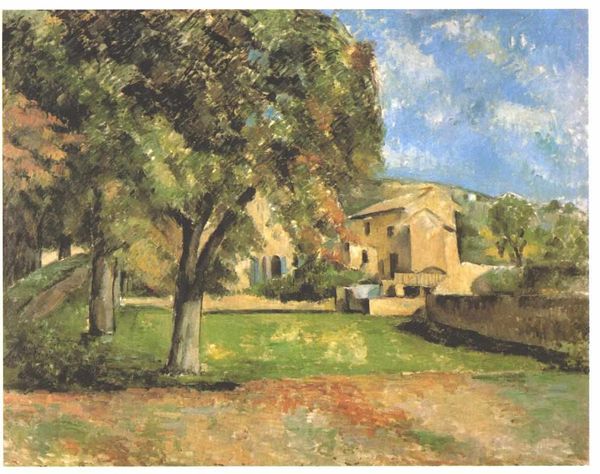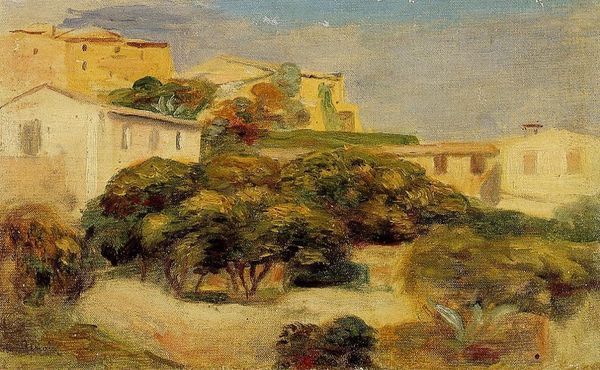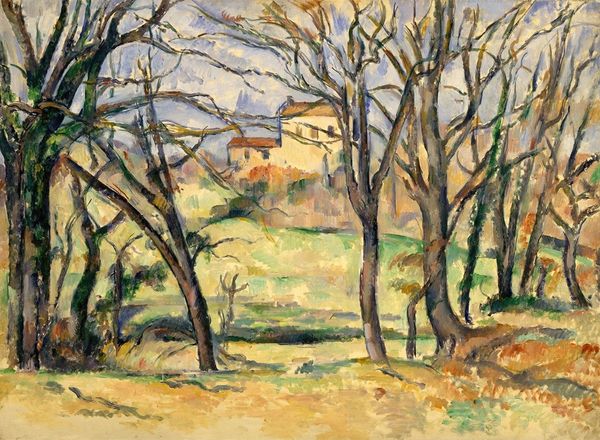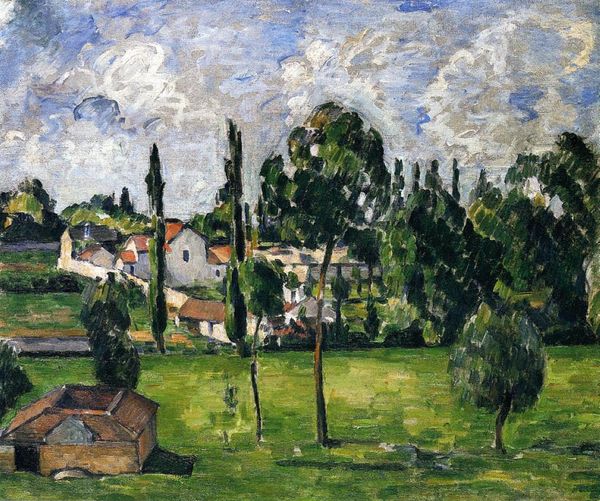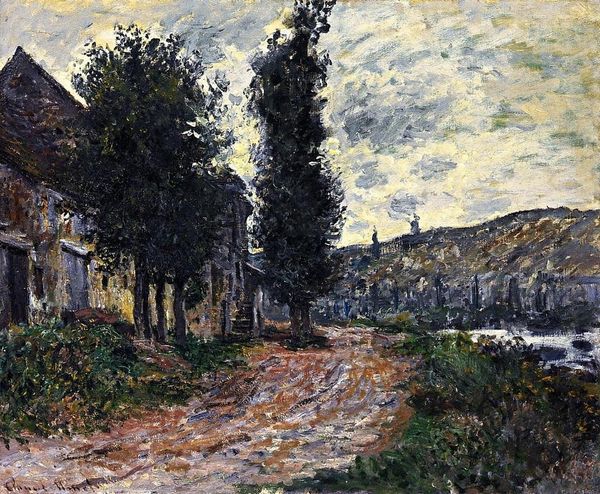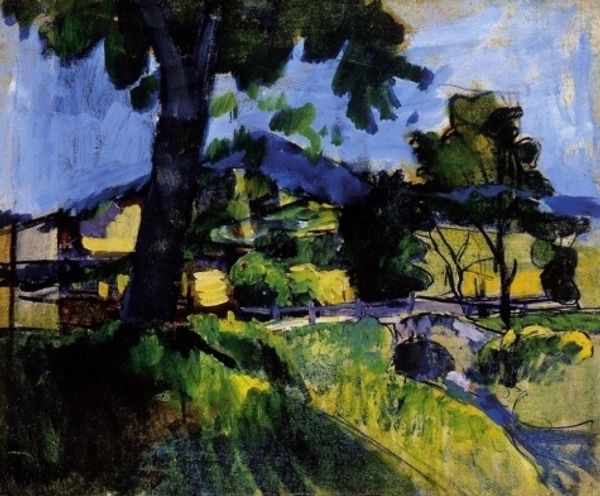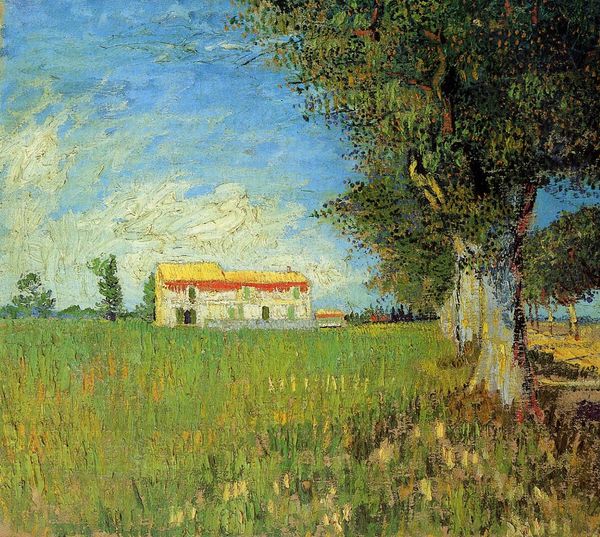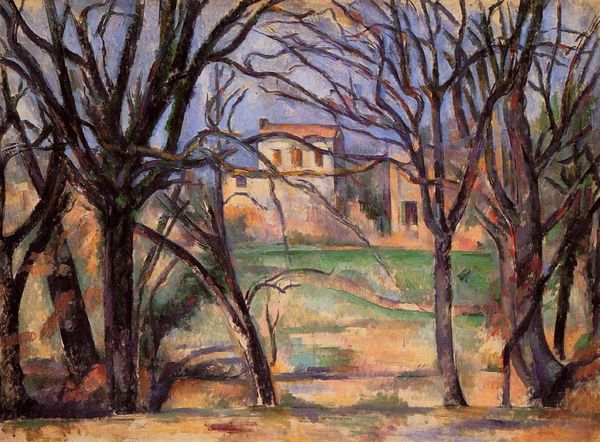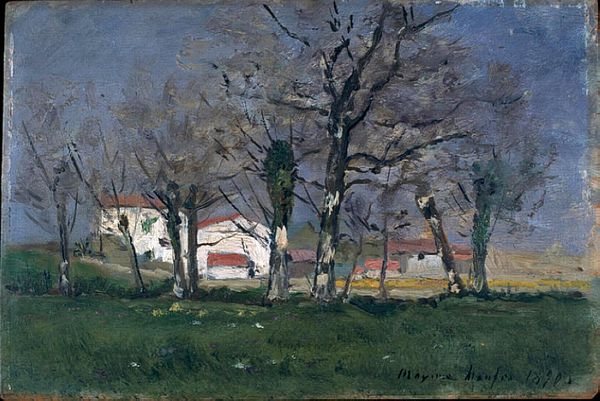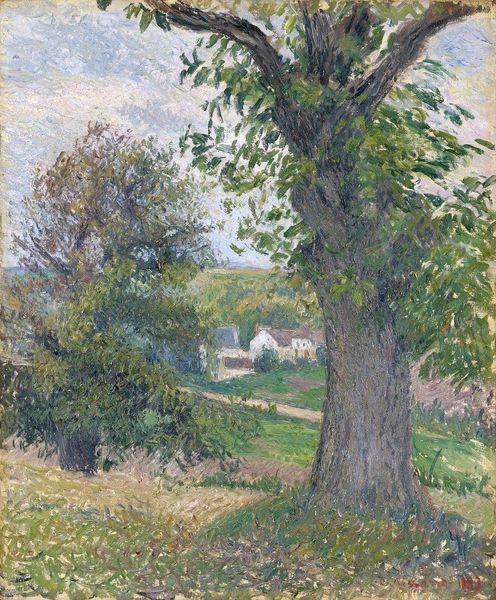
Copyright: Public domain
Editor: We're looking at Paul Cézanne's "Chestnut Trees and Farmstead of Jas de Bouffan," painted in 1876, using oil on canvas. I’m really struck by the textured brushstrokes; it feels so grounded and almost earthy. What are your thoughts? Curator: It's fascinating how Cézanne employs oil paint, isn’t it? Consider the period, where artists like Monet were fixated on light’s ephemeral qualities. Cézanne, here, uses the materiality of paint itself to build form and, by extension, questions what landscape *is*. It moves past simple representation. How does his application of paint, its thickness and direction, shape your understanding of the social and physical landscape represented? Editor: So, the way he uses the paint…it’s like he’s emphasizing the labor of painting, and perhaps even subtly linking it to the agricultural labor suggested by the farmstead? It makes me consider the consumption of landscape art, not just as a pretty scene, but as something produced. Curator: Precisely. Cézanne collapses traditional hierarchies, blurring lines between the labor of art production and the agricultural work that sustains society. Notice how the composition resists easy viewing. The materiality is present to us, requiring that we work to piece the landscape together, rather than having it passively given. What might this say about the commodification of land? Editor: I see what you mean. I was initially drawn to its apparent simplicity, but understanding his process changes everything. It's less about the idealized landscape, and more about showing how a landscape, like this artwork, is made. Curator: Absolutely. The work, and the land it depicts, are not just passively consumed, but actively constructed through labor. Editor: I hadn’t thought about it that way at first, but the connection between his painting process and the subject matter makes it so much richer. Thanks! Curator: My pleasure. It's about seeing beyond the surface, acknowledging the material and social processes embedded in art.
Comments
No comments
Be the first to comment and join the conversation on the ultimate creative platform.
